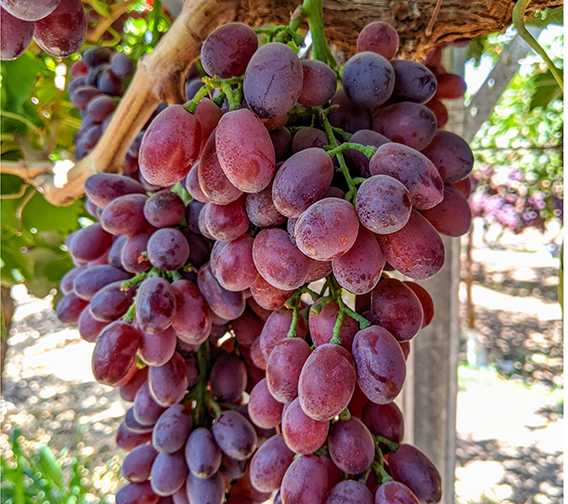Potential Pest Problems

As growers around the country gear up for the season, pest control is a primary concern. We asked three prominent vegetable Extension specialists from different regions which pests are the ones to watch out for this year, as well as what growers can expect to see in potential new pests and resistance management. Here are their predictions for 2007 and beyond.
Northeast
Gerald Ghidiu, Rutgers University
“The beet armyworm, which can be a serious pest of peppers in New Jersey, is not a pest that overwinters here; however, it seems that populations have been getting worse over time, possibly due to a change in the frequency of storms and wind currents that affect New Jersey,” says Extension Specialist Gerald Ghidiu.
While growers usually watch for all the important pests known to attack their specific crops, there are four new vegetable pests that may or may not already be in the area. These include the brown marmorated stink bug, the swede midge, and the leek moth, and a disease spread by squash bugs — the yellow vine disease of cucurbits, Ghidiu says. “They are all in the Northeast and/or Canada, but not all in New Jersey, so far — but they will be!”
Southeast
Stephen Olson, University of Florida
Thrips and the virus they transmit — tomato spotted wilt virus (TSWV) — is the biggest problem in the north Florida, south Georgia, and south Alabama area, according to Stephen Olson, vegetable Extension specialist and professor of horticultural sciences. To combat this pest, where available, growers are using resistant varieties; however, unfortunately for cherry and grape tomato growers, there are no resistant varieties, so most growers are using metallized mulches and combinations of crop protectants to control thrips. “This long drought we’ve had will reduce thrips populations because of a lack of weeds,” he says.
Another chronic problem over the last few years in the area has been spider mites. “If growers see flecking on the surface on the leaf, they need to look on the underside to see the mites. If they’re really bad, growers will see the webbing,” Olson says. “To treat against spider mites, abemectin is now available as a generic. Acramite (bifenazate, Chemtura) is labeled for tomatoes now but only for one application. Oberon (spiromesifen, Bayer CropScience) also does a good job on spider mites, especially after the second application.”
In the last few years, the Q-biotype whitefly has made an appearance in the industry. Whitefly is not normally a spring problem in the north Florida- south Georgia area. But if it gets in the system, it could be very hard to control.
“Q-biotype is harder to control than the B-biotype, or silverleaf whitefly,” Olson says. “Growers don’t know the difference between Q-biotype and B-biotype. I’m not sure I could tell, or if I have anyone at the station who could tell the difference. If growers see that whitefly pest pressure isn’t reacting to pest control, they need to take a specimen to the lab for analysis to see if it’s the Q-biotype.”
Southwest
John Palumbo, University of Arizona
Aphids were abundant in lettuce and other leafy vegetables this past winter and spring. In particular, the green peach aphid and the red lettuce aphid were heavy in lettuce from January through March, says entomologist John Palumbo.
“On fall melons (cantaloupes and watermelons), the silverleaf whitefly was probably the most significant last year due to the transmission of a new virus that showed up in the Desert Southwest (Cucurbit Yellow Stunting Disorder Virus, CYSDV),” says Palumbo. “It was found throughout most of the growing region, and in some cases caused significant reductions in yields and quality.”
Palumbo says he anticipates beet armyworm and cabbage looper to be present next fall in leafy vegetables, aphids and western flower thrips to be abundant in spring lettuce, and whiteflies in spring and fall melons.
“We are not sure what to expect from CYSDV but will be watching closely for it on our spring melon crops,” he says. “As the virus is new to the area, several scientists are trying to gain an understanding of it’s epidemiology and potential management strategies.
The most cost-effective way to battle aphids, worms, and thrips is with properly timed insecticide applications. Fortunately, growers have an adequate arsenal of effective insecticides to use in their IPM programs. Unfortunately, based on last year’s experience, insecticides do not effectively prevent whiteflies from transmitting CYSDV on newly emerged fall melons, Palumbo says.
“We are uncertain whether CYSDV will be a problem this fall, but we are recommending that growers attempt to maintain a melon-free period between late spring and early fall crops in areas where the virus was prevalent last year,” he says. “Cultural management of volunteer melons and weeds will be important this summer to eliminate potential host sources for the vector and virus.”
To date there are not any reported field failures with Admire (imidacloprid, Bayer CropScience), the standard insecticide used for whiteflies and aphids the past 14 years. Other heavily used products such as Success (spinosad, Dow AgroSciences), Intrepid (methoxyfenozide, Dow AgroScience) and pyrethroids are all performing as anticipated, Palumbo says.
Growers have had good success controlling immature whiteflies on melons with Oberon which has been used as an alternative with Admire. In leafy vegetables, Palumbo says, Beleaf (flonicamid, FMC Corp.) provided good residual control of aphids.










